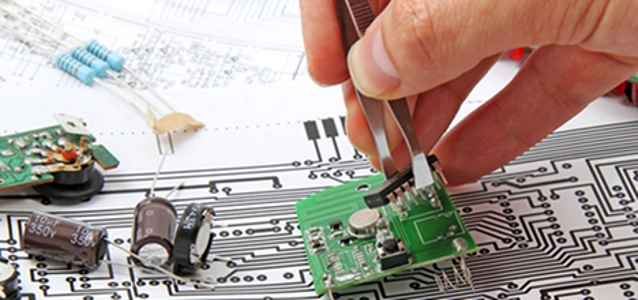
© mpanch dreamstime.com
Electronics Production |
Germany's new insolvency law (ESUG) shows positive initial results
The German Law on Further Facilitating the Restructuring of Companies (Gesetz zur weiteren Erleichterung der Sanierung von Unternehmen – ESUG) went into effect on March 1, 2012. It is designed to improve the framework for turning around companies in distress.
The law strengthens creditor interests, allows for self-administration under what is known as Protective Shield Proceedings and facilitates insolvency plan proceedings. More than 500 insolvencies have so far been initiated under the new law. In the survey, about 40% of respondents say that the initial experience is positive because fewer company liquidations are necessary.
But many say that issues remain with the new law, such as the tax treatment of debt-to-equity swaps, under which amounts owed to creditors are converted into shares. They also say that the strict requirements for opening self-administration proceedings are a problem.
These are the most important findings of the current survey entitled "ESUG study 2012 – Initial practical experience with the new insolvency code" by Roland Berger Strategy Consultants and law firm Noerr. 2,800 decision makers, including creditors, insolvency administrators, lawyers, judges, investors and managers, were asked about their experience with the new insolvency code.
"The reform of the German insolvency law will help bring about a paradigm shift in the German economy: insolvency proceedings are seen as a real opportunity to turn a company around," explains Max Falckenberg, Partner at Roland Berger Strategy Consultants. "ESUG, Germany's new insolvency law, offers a better framework for turning companies around more efficiently and saving them from bankruptcy."
Fewer liquidations, more efficient restructuring
About 40% of the survey participants say the new law meets their expectations: They anticipate significantly fewer liquidations. In particular, they applaud the introduction of a preliminary creditor committee (52%), the expansion of insolvency plan proceedings (43%) and the strengthening of self-administration (40%).
"Introducing a preliminary creditor committee provides creditors with more autonomy during insolvency proceedings," says Christian Pleister, Head of Corporate Refinancing, Restructuring and Rescue at Noerr. "This gives creditors a real say in setting the course for restructuring under insolvency law. This includes selecting a suitable person to manage the turnaround."
The courts are obliged to appoint a preliminary creditor committee where companies exceed certain limits for total assets, sales and headcount defined in the new law, and if they have not yet stopped operations. If all members agree on an insolvency administrator, the courts are bound by their decision.
The expansion of insolvency plan proceedings is just as important for more efficient corporate restructuring: The new law limits the right to veto an insolvency plan. "This is clearly a benefit, because individual creditors can no longer block the entire restructuring plan. In the past, they overused their veto rights and made it almost impossible for companies to turn around," says Falckenberg.
Debt-to-equity swaps already frequently used
Within the scope of insolvency plan proceedings, the ESUG also permits debt-to-equity swaps. This means creditors' claims can be converted into company shares – also without the approval of the existing shareholders.
Even though the law is relatively new, 41% of those surveyed have already used the simplified debt-to-equity swap. "This shows that giving creditors more say in the proceedings is the right way to go," says Pleister. "Tax law should also seek to make restructuring easier by stating that any book profits resulting from restructuring will remain tax free."
Complex proceedings – A major obstacle
Those surveyed feel the ESUG could be improved by making changes to the somewhat complex framework of insolvency proceedings. For instance, half of those surveyed complained that investigating the creditor structures at distressed companies is very complicated and involves a lot of work. "Especially finding persons willing to serve on the creditor committee can be very difficult," explains Falckenberg. "However, this could change once people become more familiar with the new law."
Those surveyed also complained about the legal requirements when filing the initial application: One-third of the applications for self-administration were rejected – in 44% of the cases because certification according to § 270b of the Insolvency Code was not sufficient. "This means a lot of valuable time is lost," says Jan von Schuckmann, member of Noerr Consulting AG's Executive Board and currently Chairman of centrotherm, a listed engineering company under self-administration. "Lawmakers need to get rid of this obstacle by making certification requirements clearer."
Another problem is the unclear legal rule regarding debt on the insolvent assets under preliminary self-administration. Clear debt rules, however, are crucial for ensuring a going concern. In light of contradictory legal rulings, "lawmakers need to quickly clarify this issue," says Pleister.
Management and adviser must demonstrate that they are independent and have the required expertise
Despite the issues that remain to be solved, experts believe the new restructuring law is a big step toward saving companies that are essentially healthy from going bankrupt. In doing so, working with the preliminary adviser plays a key role in ensuring successful restructuring under self-administration.
80% of those surveyed said it's important for both the adviser and management under self-administration to be independent and have comprehensive legal and business experience.
"Initial practical experience has shown that the ESUG reforms, despite necessary reworking, are a major step in creating an insolvency culture focused on restructuring and business continuation," summarizes Falckenberg. "That's why it's so important that the adviser and management have the necessary skills and credibility to manage proceedings successfully."




